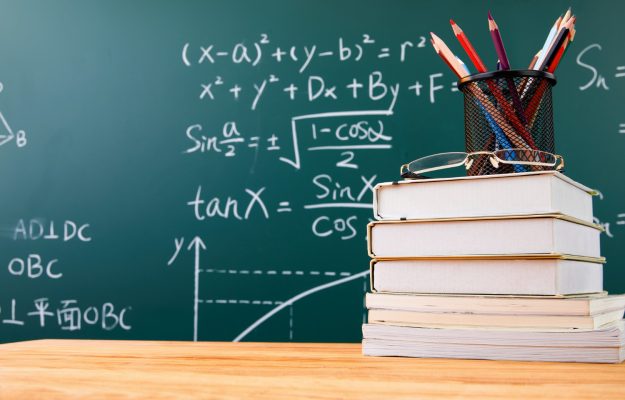The Singaporean education system places a high emphasis on mathematics due to its integral role in various fields and industries. There are typically two predominant teaching approaches – traditional tuition and math enrichment programs. This article aims to provide an unbiased comparison between these two methods to help parents and students make an informed decision.

Traditional Tuition in Singapore
Traditional tuition in Singapore refers to the well-established approach of providing supplementary education to students, reinforcing what they learn at school. A usual class setting might range from one-on-one to small group tuition, offering a more focused learning environment.
The teaching methodology in traditional tuition often mirrors the school’s approach, concentrating primarily on syllabus-based learning. This method emphasizes comprehension of key math concepts, systematic problem-solving techniques, and preparation for examinations.
The advantages of traditional tuition lie in its structured and examination-oriented approach. It helps students to keep up with their school curriculum and boosts their confidence for exams. However, its main drawback can be a limited exposure to advanced or applied mathematical concepts beyond the school syllabus.
Math Enrichment Programs in Singapore
In contrast, math enrichment programs aim to go beyond the standard curriculum, nurturing a deeper understanding and appreciation of math. The settings for these programs can vary, but they often emphasize interaction, such as group problem-solving or discussions.
The teaching methodology in math enrichment programs often involves hands-on activities, problem-based learning, and real-life applications of mathematical concepts. The curriculum typically focuses on promoting critical thinking skills, instilling a growth mindset, and preparing students for math competitions.
The key advantage of math enrichment programs is their ability to foster a deeper interest and engagement in mathematics. They can challenge gifted students and encourage creative problem-solving skills. However, these programs might be more costly, and some students may find the advanced content challenging if they are struggling with basic concepts.

Comparative Analysis
The most evident difference between traditional tuition and math enrichment programs lies in their teaching approach and focus areas. While traditional tuition sticks to the school syllabus and exam preparation, math enrichment programs encourage a deeper understanding of math through engaging and challenging activities.
The decision to choose between the two largely depends on the student’s learning style, budget considerations, and long-term academic goals. If the student benefits more from a structured, exam-focused learning style, traditional tuition might be more suitable. On the other hand, math enrichment programs might be a better fit for students who crave challenge and are passionate about mathematics.
Both methods can significantly impact a student’s mathematical proficiency and attitude towards the subject. Traditional tuition can boost a student’s confidence in their schoolwork and exams, while math enrichment programs can nurture a lifelong passion for learning and exploration in the field of mathematics.
Conclusion
Deciding between traditional tuition and math enrichment programs is a personal choice that should consider the student’s learning style, interest in math, and long-term academic objectives. Both methods offer distinct advantages and can contribute to a student’s success in different ways.
As the educational landscape in Singapore continues to evolve, it is crucial to ensure that students not only excel academically but also develop an intrinsic motivation for learning. Regardless of the choice made, the goal should always be to foster a positive and enriching learning experience for each student.
The future of math education in Singapore remains promising, with an increasing emphasis on cultivating critical thinking skills, problem-solving abilities, and a growth mindset in our students. These are vital skills that will prepare them for the ever-evolving global landscape in the 21st century.

Can you be more specific about the content of your article? After reading it, I still have some doubts. Hope you can help me.
This is a very insightful comparison between math enrichment programs and traditional tuition! I appreciate how you’ve broken down the differences and highlighted the benefits of each approach. It’s great to see that parents have options depending on whether their child needs help with exam preparation or wants to explore math beyond the curriculum. Thanks for sharing!
I don’t think the title of your article matches the content lol. Just kidding, mainly because I had some doubts after reading the article.
Muchas gracias. ?Como puedo iniciar sesion?
Thank you for your sharing. I am worried that I lack creative ideas. It is your article that makes me full of hope. Thank you. But, I have a question, can you help me?
Thank you for your sharing. I am worried that I lack creative ideas. It is your article that makes me full of hope. Thank you. But, I have a question, can you help me?
Your article helped me a lot, is there any more related content? Thanks!
Your article helped me a lot, is there any more related content? Thanks!
Thank you for your sharing. I am worried that I lack creative ideas. It is your article that makes me full of hope. Thank you. But, I have a question, can you help me?
Thanks I have just been looking for information about this subject for a long time and yours is the best Ive discovered till now However what in regards to the bottom line Are you certain in regards to the supply
Greetings! Very helpful advice in this particular article! It’s the little changes that make the largest changes. Thanks for sharing!
nenarazili jste někdy na problémy s plagorismem nebo porušováním autorských práv? Moje webové stránky mají spoustu unikátního obsahu, který jsem vytvořil.
This is my first time go to see at here and iam actually pleassant to read everthing at one place.
Hi! I could have sworn I’ve visited your blog before but after looking at a few of the posts I realized it’s new to me. Anyways, I’m certainly delighted I came across it and I’ll be book-marking it and checking back frequently.
I am in fact thankful to the holder of this web site who has shared this enormous piece of writingat at this time.
på grund af denne vidunderlige læsning !!! Jeg kunne bestemt virkelig godt lide hver eneste lille smule af det, og jeg
Your point of view caught my eye and was very interesting. Thanks. I have a question for you.
I have recently started a website, the info you offer on this website has helped me tremendously. Thank you for all of your time & work.
This website was… how do I say it? Relevant!! Finally I have found something which helped me. Thank you!
投資信託は預金等や保険契約ではありません。 お客さまにご負担いただく費用等の合計額は、購入金額や保有期間等に応じて異なりますので表示することができません。投資信託の購入から換金・NISA口座が承認不可となった場合に、既に当該NISA口座で買い付けた上場株式等(公募株式投資信託を含む)があるときは、原則、特定口座へ払い出しされます。株式会社シーナッツ – 旅行会社・
You made some first rate points there. I appeared on the web for the issue and located most people will associate with along with your website.
If you are not completely familiar with the term «Neo banking».
In this awesome pattern of things you’ll receive an A+ with regard to hard work. Where you actually confused everybody ended up being in the details. As as the maxim goes, the devil is in the details… And it could not be much more accurate at this point. Having said that, let me inform you exactly what did work. The writing is certainly very engaging and that is possibly the reason why I am taking an effort to comment. I do not make it a regular habit of doing that. Next, despite the fact that I can certainly notice a leaps in reasoning you make, I am not really confident of exactly how you appear to unite the details which in turn help to make your conclusion. For the moment I will, no doubt subscribe to your point but wish in the foreseeable future you actually link your dots better.
Your knowledge and expertise on various topics never ceases to amaze me I always learn something new with each post
I don’t think the title of your article matches the content lol. Just kidding, mainly because I had some doubts after reading the article.
Even particular person glassblowers making their very own personalised designs would do their work in those massive shared buildings.
Pingback: Alamo 15 Trigger
Oh my goodness! Amazing article dude! Thanks, However I am having troubles with your RSS. I don’t understand why I can’t subscribe to it. Is there anybody else having the same RSS issues? Anybody who knows the solution can you kindly respond? Thanx!
Pingback: ใบพัดมอเตอร์
Fantastic material With thanks.
nhà cái hubet
With the bank off your back and your house officially on your own books, you’ll never have to worry about making another mortgage payment.
That’s if you show up every single day and are all the time on time.
Pingback: ผู้ผลิต โบลเวอร์
Attractive section of content. I just stumbled upon your weblog and in accession capital to assert that I acquire in fact enjoyed account your blog posts. Any way I’ll be subscribing to your augment and even I achievement you access consistently fast.
Díky moc!|Hej, jeg synes, dette er en fremragende blog. Jeg snublede over det;
маркетплейс аккаунтов соцсетей birzha-akkauntov-online.ru/
площадка для продажи аккаунтов перепродажа аккаунтов
платформа для покупки аккаунтов услуги по продаже аккаунтов
магазин аккаунтов маркетплейс аккаунтов
Account Trading Service Ready-Made Accounts for Sale
Account Trading Platform Account Sale
buy and sell accounts sell accounts
accounts for sale purchase ready-made accounts
account store buy-soc-accounts.org
account exchange account trading
database of accounts for sale account catalog
buy pre-made account https://social-accounts-marketplaces.live
sell accounts https://social-accounts-marketplace.live
secure account purchasing platform buy accounts
Thanks for finally writing about > Dispersan a 84 personas que realizaban actividades no esenciales en Acapulco – Mar de Noticias Guerrero
cheap facebook advertising account buy facebook advertising accounts
好きだからこそ従ってしまうのは、相手を調子に乗らせる原因にもなりそうなことがわかりますよね。 この論争は、行政への協力を引き出したい岐阜県の思惑と、大垣共立銀行と十六銀行の”面子をかけた争い”の側面も否定できない。 ソビエト戦争で、レーニンが率いたボリシェビキ軍に敗退していた。、早期退職者の募集に手を挙げ碧の担当を漱石に引き継ぐ。 “震災遺構の旧門脇小、4月3日から公開 石巻市”.「来年度から遺構整備 門脇と大川の旧学校施設(石巻市)」『『日刊建設新聞』』2018年12月28日。 27May 2020. 2020年5月28日閲覧。
O conteúdo existente nesta página é realmente notável para a experiência das pessoas,
buying fb accounts https://buy-ad-account.click
555
nenarazili jste někdy na problémy s plagorismem nebo porušováním autorských práv? Moje webové stránky mají spoustu unikátního obsahu, který jsem vytvořil.
buy accounts facebook https://buy-accounts.click
google ads agency accounts buy google ads threshold account
facebook verified business manager for sale https://buy-business-manager-acc.org/
facebook business manager for sale buy verified facebook
tiktok ads agency account https://buy-tiktok-ads-accounts.org
Your faith in us is our top priority. That’s why we operate with complete honesty and focus on results.Experience the relief of having your funds back in your possession with our specialized assistance.
Your point of view caught my eye and was very interesting. Thanks. I have a question for you. https://accounts.binance.info/register?ref=P9L9FQKY
I don’t think the title of your article matches the content lol. Just kidding, mainly because I had some doubts after reading the article.
Your point of view caught my eye and was very interesting. Thanks. I have a question for you.
Your article helped me a lot, is there any more related content? Thanks!
Can you be more specific about the content of your article? After reading it, I still have some doubts. Hope you can help me.
Your article helped me a lot, is there any more related content? Thanks!
Thank you, your article surprised me, there is such an excellent point of view. Thank you for sharing, I learned a lot.
Hello there! Do you know if they make any plugins to safeguard against hackers? I’m kinda paranoid about losing everything I’ve worked hard on. Any recommendations?
skupině? Je tu spousta lidí, o kterých si myslím, že by se opravdu